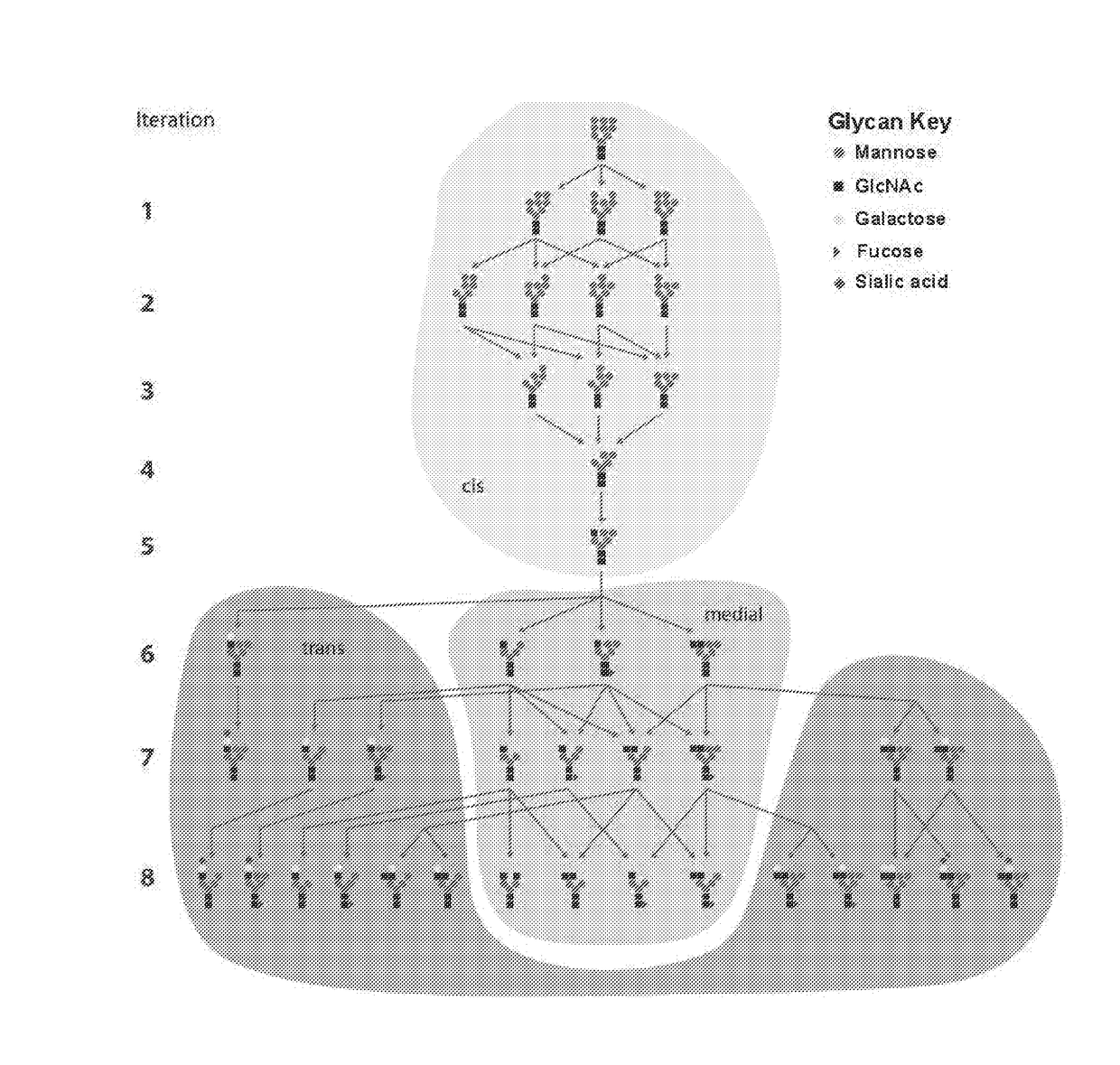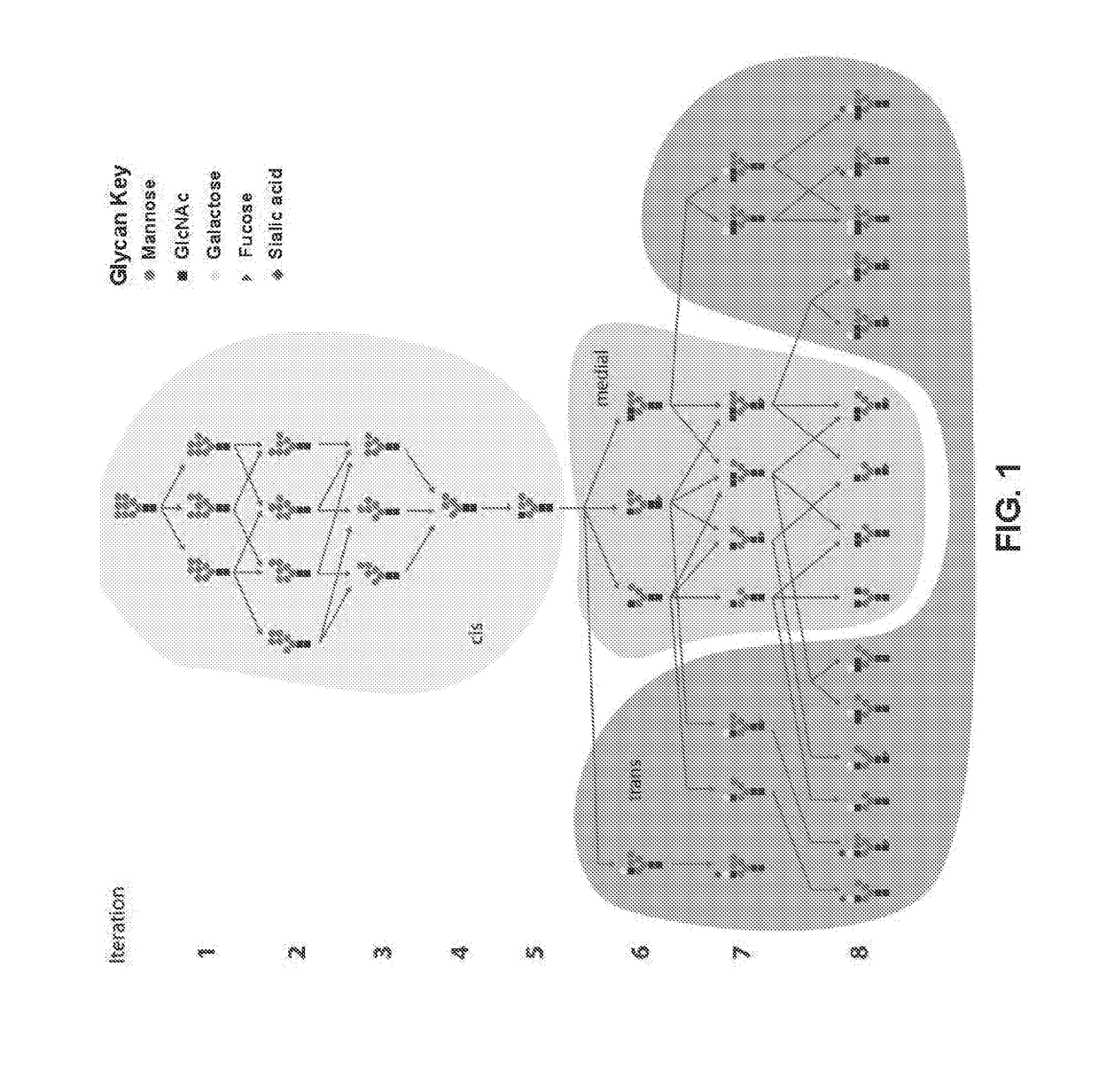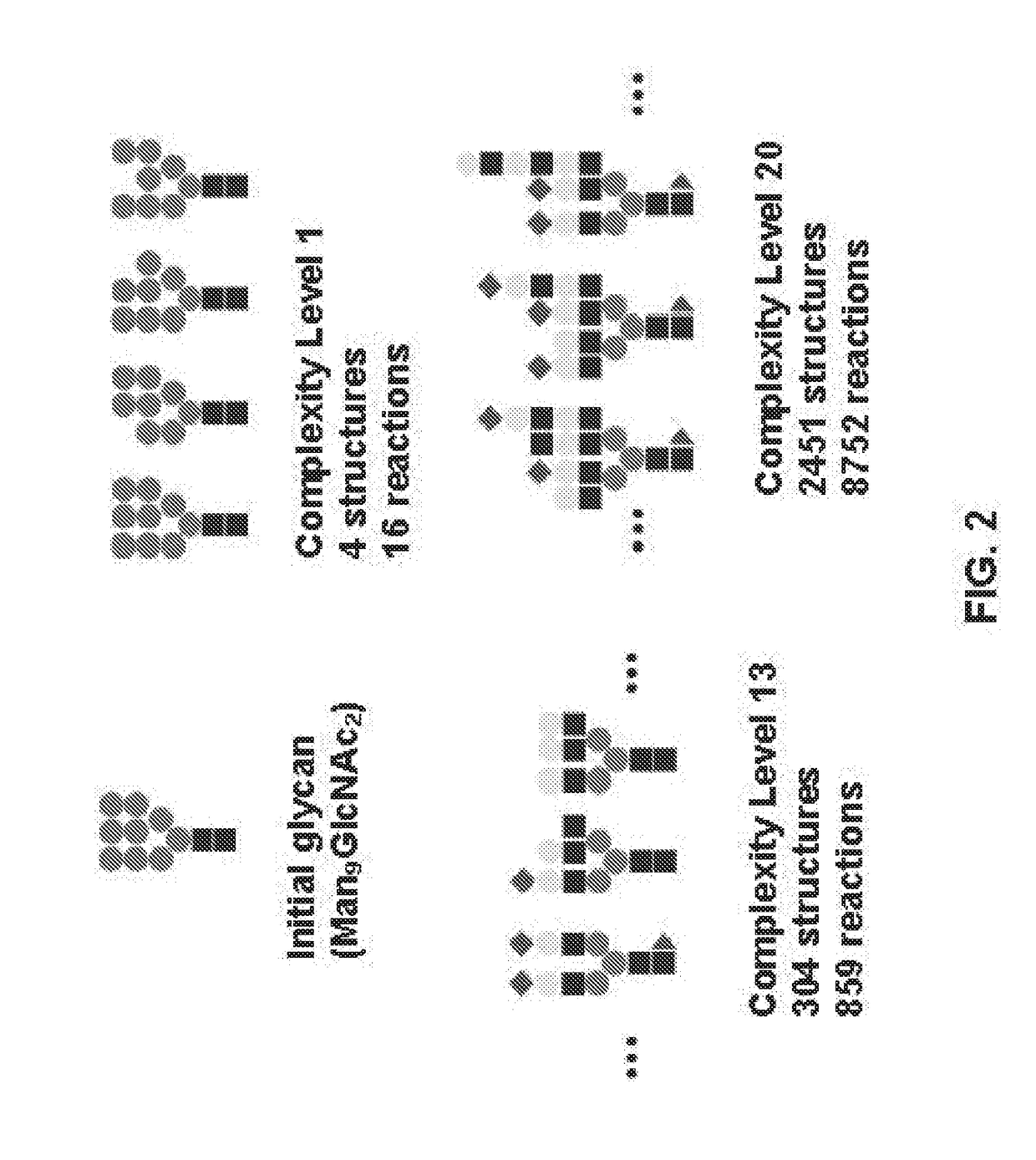Systems and Methods for Predicting Glycosylation on Proteins
a glycosylation and protein technology, applied in the field of rational engineering of bioindustrial cell culture conditions, can solve the problems of complex guessing and trial-and-error experimentation, and achieve the effect of severe physiological and developmental consequences
- Summary
- Abstract
- Description
- Claims
- Application Information
AI Technical Summary
Benefits of technology
Problems solved by technology
Method used
Image
Examples
example 1
Prediction of Glycoprofiles after Enzyme Knock-Down
[0090]Examples of simulation of perturbation in the reaction network: Enzyme know-know, are shown in four cases. The first glycoprofile analyzed, as reported in (Imai-Nishiya et al., 2007) for an antibody producing CHO cell line, consisted of fucosylated, bi-antennary glycans. Experimental knock-down of FUT8 using siRNA had led to successful omission of the core fucosylation and the substitution of the three glycans with their non-fucosylated versions (Imai-Nishiya et al., 2007), a result very well predicted by the Markov model in simulations (FIG. 23).
[0091]Aiming for validation on a more complex dataset, recently published glycoprofiles from a CHO-GS cell line expressing erythropoietin (EPO) (Yang et al., 2015) were analyzed. Simulation of a GnTIV knock-out yielded good quantitative agreement with the experimental knock-out profile (FIG. 23), demonstrating that the Markov model can serve as a helpful predictive tool even in high-d...
example 2
Assessment of an Uncompartmentalized Golgi
[0094]While the localizations assumed for this model rely on a widely accepted consensus (Table 1) (Moremen et al., 2012), there remain disagreements with how and to what extent Golgi compartmentalization is implemented in glycosylation models. Given the availability of mutant glycoprofiles, the invention model can test the impact of Golgi compartmentalization by running simulations with different localization scenarios and comparing them to the experimental results. To demonstrate this, knock-out simulations were run with all enzymes localized to the same compartment, thus effectively turning the Golgi into a non-compartmentalized organelle. As seen from the validation datasets, this leads to knock-out predictions not in congruence with the experimental glycoprofiles (FIG. 27). The discrepancies seen in this case stem from changes in network topology caused by the emergence of reactions that were absent in the compartmentalized case due to ...
example 3
Analysis of a Congenital Disorder of Glycosylation
[0095]An aberrant glycoprofile from a patient was obtained who suffered from a glycosylation disorder with unclear genetic origin (Butler, 2003) (FIG. 31). After tailoring the generic glycosylation network to the glycoprofile from a healthy patient (FIG. 32), a genetic algorithm (as implemented in MATLAB) was used to find the perturbation in the reaction network that would come closest to the profile seen in the patient. After running the algorithm for 75 generations, the Euclidian distance between the predicted and the observed patient profile showed no further improvement indicating a local optimum (FIG. 33). At the optimum, ManII-dependent reactions were predicted to be knocked down to 71%, GnTI-dependent reactions to 85% and GnTII-dependent reactions to 87% while a3SiaT- and GnTV-dependent reactions were predicted to be at 0% (FIG. 34). These results indicate that the glycosylation network of the patient is more heavily affected ...
PUM
| Property | Measurement | Unit |
|---|---|---|
| transparent | aaaaa | aaaaa |
| structure | aaaaa | aaaaa |
| relative frequency | aaaaa | aaaaa |
Abstract
Description
Claims
Application Information
 Login to View More
Login to View More - R&D
- Intellectual Property
- Life Sciences
- Materials
- Tech Scout
- Unparalleled Data Quality
- Higher Quality Content
- 60% Fewer Hallucinations
Browse by: Latest US Patents, China's latest patents, Technical Efficacy Thesaurus, Application Domain, Technology Topic, Popular Technical Reports.
© 2025 PatSnap. All rights reserved.Legal|Privacy policy|Modern Slavery Act Transparency Statement|Sitemap|About US| Contact US: help@patsnap.com



